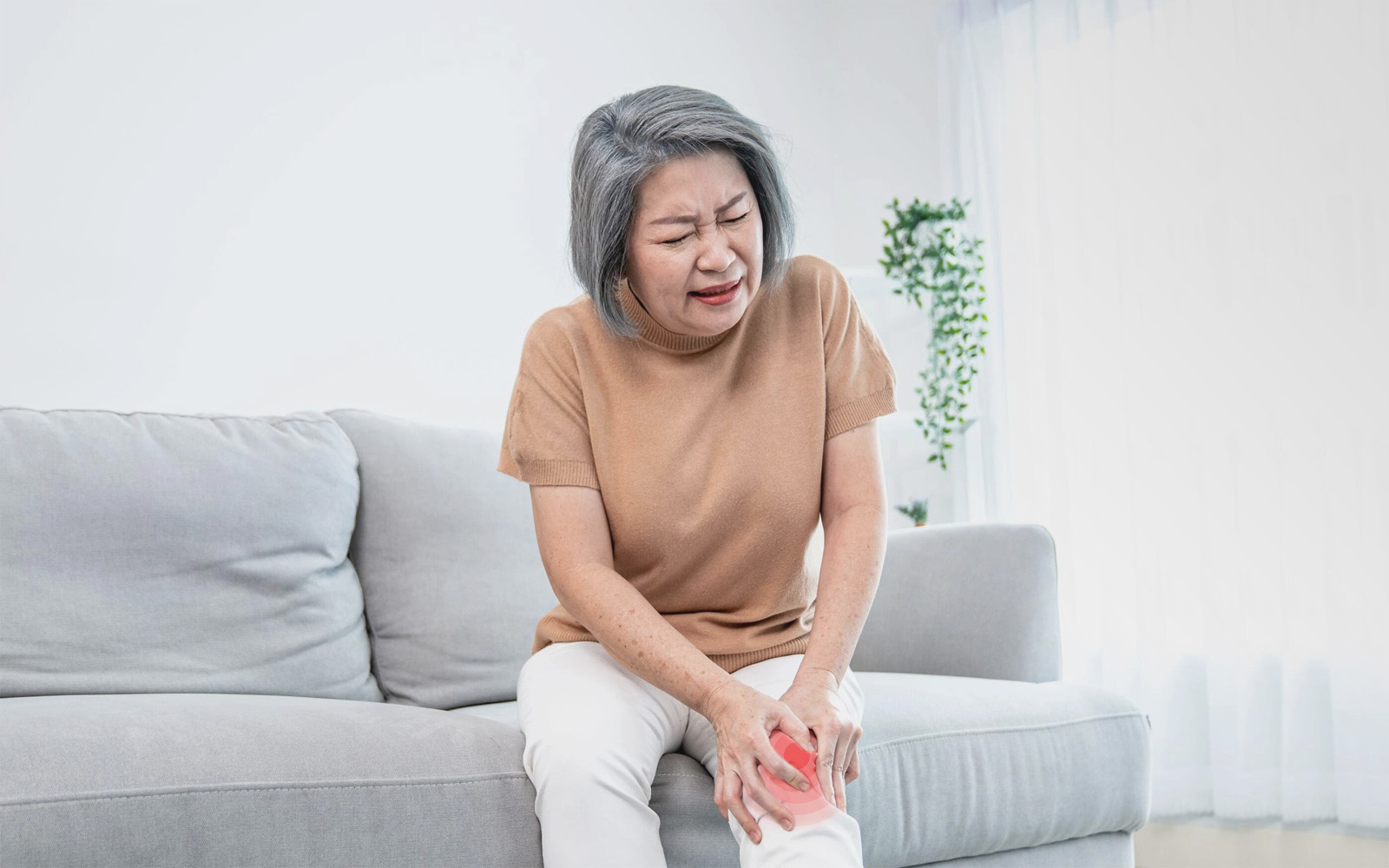Knee Pain in Your 60s: Dr Pain explains what causes persistent knee pain and how to treat it safely
October 16, 2025
"Over the years, my knee pain has slowly worsened — it feels stiff in the mornings, sore after walking, and sometimes even swells for no reason. I'm 60 now, and many of my friends have the same issue. I've tried massages and painkillers, but nothing seems to help. I really don't want surgery. What can I do?"
60-year-old Mrs. Lim
Many people in their 60s ask me: "Why does my knee hurt even though I didn't injure it. And what can I do to relieve the pain without surgery?"
As a pain specialist in Singapore, I see this every day. The knee is a complex joint that supports our body weight and movement. With age, natural wear and tear can lead to stiffness, swelling, and chronic pain.
The good news is that most knee pain in older adults can be treated safely and effectively without surgery. Here's what causes it, and how you can manage it.
Why does Knee Pain Become More Common after 60?
As we age, our joints naturally undergo wear and tear. The knee, in particular, takes on decades of pressure from walking, climbing stairs, and even just standing. Here are a few main reasons why knee pain tends to appear in our later years:
Degeneration and Osteoarthritis
One of the most common causes of knee pain I diagnose in older patients is osteoarthritis. This occurs when the protective cartilage in the knee joint gradually wears down. Without that cushioning, the bones start to rub against each other, causing stiffness, swelling, and pain. Many patients describe this as an "aching" or "grinding" feeling when they move.
Excess Weight
Excess body weight adds extra stress to the knee joint and over time, that strain accelerates cartilage breakdown. I often remind my patients that even a small amount of weight loss can significantly reduce knee pressure and pain. A balanced diet and regular low-impact exercise, such as hydrotherapy, can go a long way toward maintaining both joint and overall health.
Medical Conditions
Conditions such as gout, rheumatoid arthritis, or bursitis are also common contributors to knee pain among seniors. These inflammatory disorders can cause swelling, tenderness, and loss of mobility. Managing these underlying medical conditions is key to preventing further joint damage.
Common Knee Problems I See in Older Adults
We see many of patients with knee pain conditions at the Singapore Paincare Center, especially seniors like Mrs Lim. Here are a few conditions I often diagnose in patients aged 60 and above:
-
Knee Osteoarthritis (OA Knee)
As mentioned earlier, this is the most common culprit behind chronic knee pain in older adults. Age, weight, previous injuries, and genetics can all contribute. Patients experience pain, stiffness, and difficulty bending or straightening the knee, sometimes with swelling or redness.
-
Knee Bursitis
This occurs when the small fluid-filled sacs (bursae) around your knee become inflamed. It's often the result of repetitive pressure, such as frequent kneeling or a direct blow to the knee. Symptoms include pain, swelling, and warmth around the knee joint, sometimes accompanied by fever if infection is present.
-
Pseudogout
Pseudogout is caused by the buildup of calcium crystals in the joint, which triggers inflammation. It tends to affect older adults and can resemble gout. There may be sudden swelling, redness, and sharp pain usually in one knee, though other joints may also be involved.
-
Meniscus Tear
The meniscus is a C-shaped cartilage that cushions your knee. Over time, this cartilage can become fragile and tear more easily. Sharp pain, swelling, stiffness, and sometimes a "locking" sensation may happen when trying to stand or move.
How I Help Patients Manage and Prevent Knee Pain
You might not be able to completely prevent knee pain as you age, but there are definitely steps you can take to reduce your risk and maintain mobility:
-
Maintain a Healthy Weight
Every extra kilogram of body weight adds pressure on your knees. Keeping your weight within a healthy range helps protect your joints and relieve pain if you already have osteoarthritis.
-
Exercise Regularly
Low-impact exercises such as walking, swimming, and cycling help strengthen the muscles that support your knees.
-
Wear the Right Footwear
Choose shoes with good cushioning and arch support to reduce impact and protect your knees from strain.
When to See a Pain Specialist
Ignoring early knee pain can make recovery slower. The sooner you identify the cause, the more likely you can treat it effectively — and without surgery.
At Singapore Paincare, I always start by finding out what's really causing your pain before deciding on any treatment. Our Painostic® process helps uncover the root of your pain — whether it's joint wear, muscle strain, or something deeper — so we can create a treatment plan that truly fits you.
It's natural to worry about knee pain as you get older, but you don't have to live with it. With the right care and a personalised approach, you can stay active, independent, and enjoy life pain-free.
Your Next Step to Pain Relief
If you'd like to learn more, explore our Knee Pain page for a detailed look at causes and treatments.
Or message us on WhatsApp — let's get you moving without pain again.
